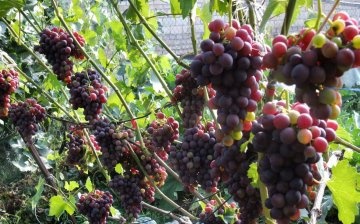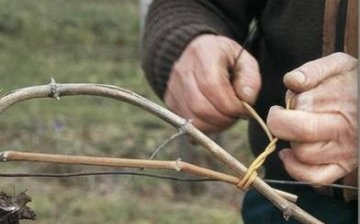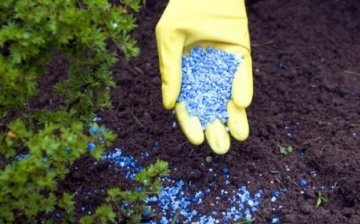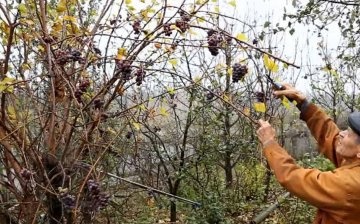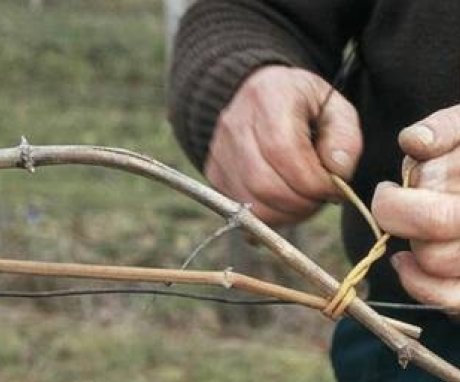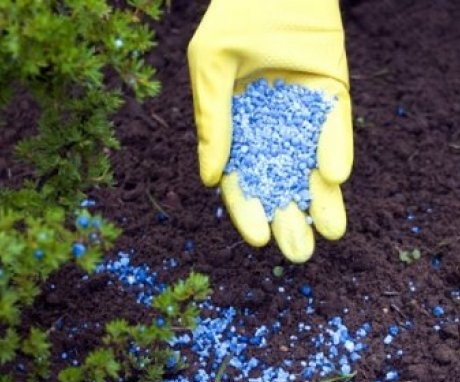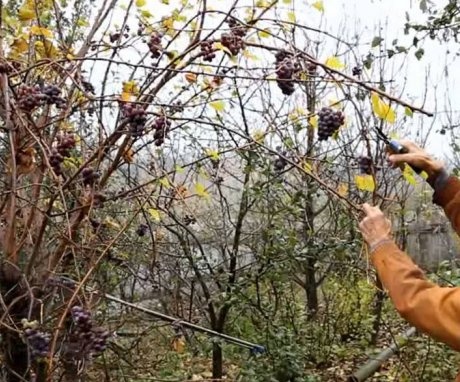How to properly care for grapes throughout the year
This ancient culture - the cultivation of the vine - requires attention from the gardener all season long, since there is a lot of work here and there are no "minor" ones, or, even more so, those that can be neglected. This has a simple explanation - the grape is a very platistic plant and reacts sensitively to every action of caring for it. Therefore, you need to take care of the grapes all the time that it grows on your site.
Content:
Spring grape care
Probably the most important part of the season for the development of grapes - Spring. It was at this time that the "foundation" or "basis" was laid, from which the final result will be built - how high-quality and voluminous the grape harvest will be.
In our climatic conditions, the first work begins in the month of April.
Here it will be necessary:
- Remove the winter cover from the vine.
- Strengthen the vine shoots on the trellis (either vertically or with a slope).
At the same time, a white bloom caused by dampness can often be found on a grape bush. There is no need to be afraid - this plaque will disappear completely by itself after a while.
When the danger of frost return disappears, the bunches of grape shoots are untied and placed on the trellis so that the fruitful parts of the vine are on its lower wire row.
It should be borne in mind that if, after opening, you observe on the bush predisposition to diseasethat were in the last season, it is better to play it safe and, for preventive purposes, treat the grapes with an appropriate means (best of all, such that it has already proved itself well when used earlier). Under favorable weather conditions (when the warm weather is finally established), after the tenth day of this month, you can plant young grape plants.
Seedlings should not be planted too often, grape bushes should be rare - this is a condition for obtaining an impressive harvest. To achieve this, you need to remove excess vine shoots from the bush several times (as a rule, three is enough). It is better to do this at a time when the new grape shoots are less than 40 centimeters.
This method, which allows optimal distribution of the nutritious juices of the vine, is followed by the following steps:
- Cutting off unnecessary kidneys.
- Removal of shoots in the root zone.
- Treatment of the bush with fungicides for the prevention of grape diseases.
With the arrival of May, you will need to make three "U":
- Strengthen fresh vine shoots on trellis wire
- Fertilize the plant a week and a half before flowering with the appropriate feeding preparations (in a liquid consistency)
- Remove excess vine ovaries after the beginning of flowering, so that there is no too much load on the bush
During this period of the year the gardener should to direct their actions so that nature does not interfere with doing its job for the plant.
Summer grape care
After summer comes, to care for the grapes on your site you will also have to work hard and do the following work:
- Regular pinching of the plant so that the vine fits within one and a half meters or even one meter and 70 centimeters along its length.
- Since pinching is peculiar to the bush, you will need here systematically (and most importantly - on time) cut off emerging there are stepchildren on it so that the plant does not spray its nutrient resources and they are enough to provide growing shoots and ripening bunches of berries.
- In order for the berries to have sufficient sunlight, it should be, somewhere in the middle of summer, a little cut off the foliage of the grape bush.
From the beginning of summer to its middle, it follows a couple of times (and, if necessary, more) fertilize a plant.
Experienced gardeners recommend the following combined feeding composition (for a volume of 10 liters of water):
- The basis is cow dung, it is taken in kilograms 2.
- Add to the mullein in grams: 30 superphosphate, 20 nitrophoska and 50 wood ash.
Again, from experience it follows that fertilization at a later date is undesirable, since the extension of the growing season of grapes does not contribute to its resistance to cold and the plant may not survive the winter. In a rainy summer, loosening of the soil will be required, because if an "earthen crust" (hard crust) is formed, then the air to the roots will be limited and this will affect the plant accordingly.
An important summer activity should be daily monitoring of plants for the first signs of any disease.
Visible symptoms are yellow and white unnatural spots on the bushes. If they are detected, the grapes should be treated immediately with drugs that can overcome the disease.
In our conditions, the most common diseases are:
- False powdery mildew or as it is also called "mildew", which is caused by parasitic fungi. Treatment with Bordeaux liquid (or similar preparations) is recommended.
- Ash or "oidium" - after the name of the fungus that causes it. In this case, gardeners practice sprinkling the vine with sulfur (colloidal sulfur).
Treatment regimen - 2 times: early June (1) and July (2), while doing it in a complex way (simultaneously against both diseases with one "cocktail"), and in order to avoid spider mites, any remedy against it is added.
Many of those who grows grapes, among other things, artificial additional pollination of the flowers of the vine is used (the easiest way is to shake them off in a clean liter glass jar). The main goal of the summer works is to help the grapes "bear and give birth" to its fruits - berries.
Grape care in autumn
And now with regard to the last autumn stage of work on caring for the vine, when you did collect the "fruits" of your labor - grapes.
Naturally, the need and purpose of work at this time is to properly prepare your plants for winter, so that they survive at this time of the year and in the spring everything will start all over again.
For this:
- It should be understood that after harvesting the vine, which has given energy to its "children", becomes weaker and needs to be supported, or, in other words, to feed it so that it compensates for the energy expended on the berries.
- You also need to kind of harden the plant in order to prevent attacks from infectious diseases and damage by pests. Moreover, after the harvest has been harvested, nothing any longer prevents the use of chemical additives in the applied agrotechnical preparations.
- Immediately after the harvest is harvested, there is no need to water the plant, but later, in October, it will be needed so that the grapes can better prepare for winter.
The watering procedure at this time is recommended as follows: pour water not as during regular watering, but into the prepared grooves.
So the water will not spread, but will settle in these recesses, which are located in the places necessary for the plant - near the roots. At the same time, we must not forget about loosening the soil, after the water around the bush goes into the ground.
For feeding take:
- Organic mixed with wood ash, but in small quantities.
- And also a layer of humus for covering (mulching) the soil.
Another autumn work is the activities to form vine bushes.
Here it is important not to miss the right time, the leaves on the plant should already fall, and frosts should not come yet, otherwise you will encounter winter fragility of the shoots.
Also in the fall follows produce and trim on the vine of such shoots that:
- Honestly served their purpose and exhausted their resource.
- Is deformed or does not come off well after illness.
Since our winters (in most domestic regions) are quite cold, some of the shoots that can be removed (see above) are best left for replacement and cut off in the spring, after the bush has passed the winter test.
In cases where the grower lives in an area with a harsh winter for grapes, or we are dealing with a grape variety that does not tolerate cold weather, care should be taken to protect the vine from frost.
It is recommended here:
- Trim the bush so that it can be easily bent to the ground surface.
- Pour spruce branches onto the grape bush. In severe frost, such a shelter can be additionally insulated by pouring a good layer of snow on top.
- In other words, in the fall, you need to do everything for the successful wintering of the vine, as well as help it recover its strength spent this season.
The vine is not for lazy people. But this work is never unpleasant, since the plant has an amazing color and symbolizes life itself, where the one who works is rewarded a hundredfold.
More information can be found in the video.



